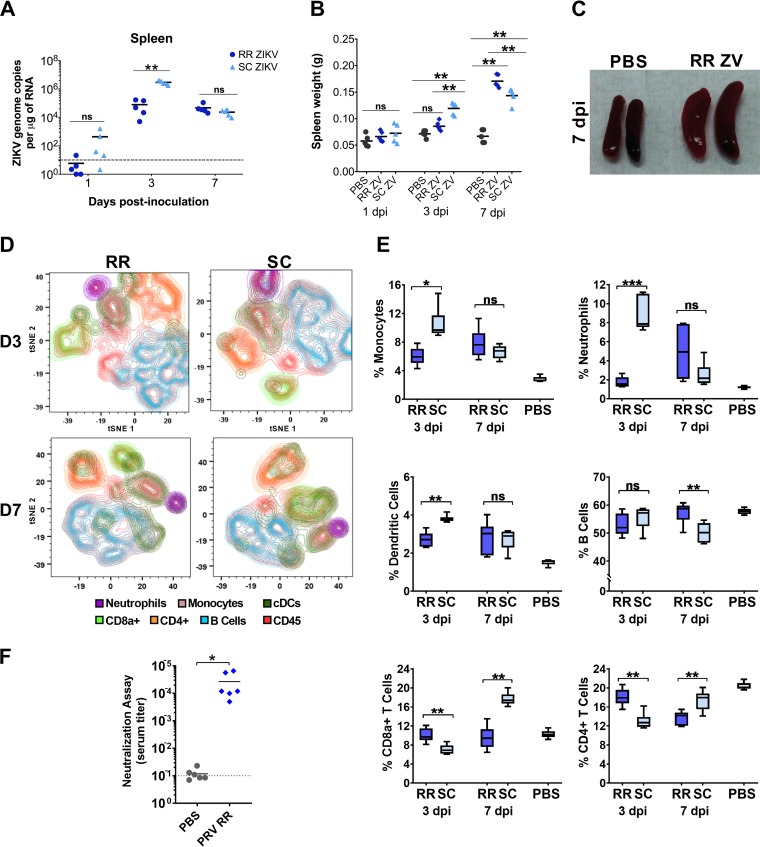FIG 5.
Systemic cellular and humoral immune responses following rectal and subcutaneous routes of ZIKV infection. (A) ZIKV genome copies in the spleen, and (B) spleen weights determined at days 1, 3, and 7 postrectal (RR ZIKV) or subcutaneous ZIKV (SC ZIKV) inoculations. For A and B, two-tailed unpaired, nonparametric Mann-Whitney tests were conducted (*, P < 0.05; **, P < 0.001; ns, no significance). (C) Gross images of uninfected (PBS) and infected (RR ZIKV) spleens at 7 dpi. (D) Spleen cells were stained with metal-conjugated antibodies and metal intercalators (rhodium and iridium) (as provided in Table 1) and analyzed by mass cytometry. t-SNE plots showing spatially distinct immune cell populations in the spleens of mice following rectal (RR) or subcutaneous (SC) ZIKV inoculations at days 3 (D3) and 7 (D7). (E) The percentage of monocytes (CD45+ CD11b+), neutrophils (CD45+ Ly6G+ CD11b+), dendritic cells (CD45+ CD317 negative [CD317−] CD11c+), B cells (CD45+ CD3− CD19+), and CD8+ and CD4+ T cells (CD45+ CD3+) following RR and SC ZIKV inoculations at 3 and 7 dpi. As a reference, splenic cell populations quantified for PBS control mice (day 7 following PBS inoculation via rectal and subcutaneous routes) were included. (F) Prechallenge serum neutralization titer of control mice (PBS) and ZIKV (PRVABC59)-infected mice via the rectal route (PRV RR) on day 20 (D20). Two-tailed unpaired, nonparametric Mann-Whitney tests were conducted for A and B. For E and F, student’s t tests were performed for statistical analysis (*, P < 0.01; **, P < 0.001; ***, P < 0.0001; ns, no significance).

